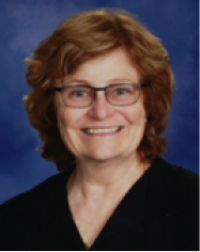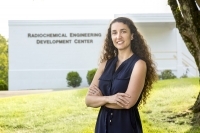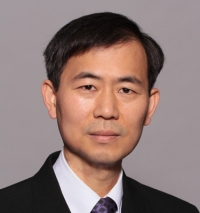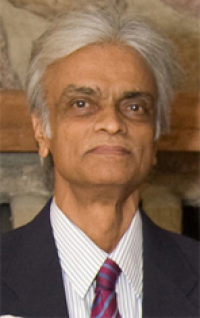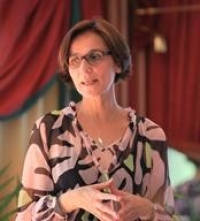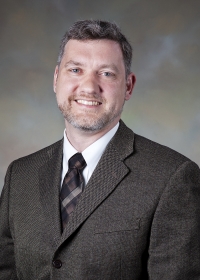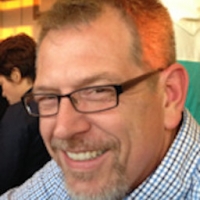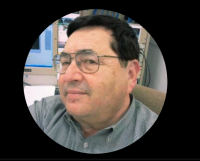Fall 2018 Colloquium Series
Hadron Therapy–Current Progress and Research Issues
SPEAKER:DR. ELEANOR A. BLAKELY LAWRENCE BERKELEY NATIONAL LABORATORY DATE/TIME:MON, 11/26/2018 – 4:00PM TO 5:00PMLOCATION:3105 ETCHEVERRY HALLFall 2018 Colloquium SeriesAbstract: Hadron radiotherapy for cancer treatment with protons or carbon ions was originally developed at the Berkeley Laboratory. Today the United States has more than 25 proton treatment facilities nation wide, but no carbon ion radiotherapy (CIRT) facility. Currently, approximately…
Read MoreLaser-driven Pulsed Neutron Sources as a potential Pool-side Characterization Tool for Nuclear Fuels
SPEAKER: SVEN C. VOGEL TECHNICAL STAFF MATERIALS SCIENCE AND TECHNOLOGY DIVISION LOS ALAMOS NATIONAL LABORATORY DATE/TIME: MON, 11/19/2018 – 4:00PM TO 5:00PM LOCATION: 3105 ETCHEVERRY HALL Fall 2018 Colloquium Series Abstract: The unique advantages of neutrons for characterization of nuclear fuel materials are applied at the pulsed spallation neutron source at LANSCE to accelerate the development and ultimately…
Read MoreProduction of the Transplutonium Elements
SPEAKER: SUSAN HOGLE NUCLEAR ENGINEER DATE/TIME: MON, 11/05/2018 – 4:00PM TO 5:00PM LOCATION: 3105 ETCHEVERRY HALL Fall 2018 Colloquium Series Abstract: The transplutonium elements were discovered beginning in the 1940s and 50s, with many synthesized for the first time at UC Berkeley. Since that time, large scale reactor production programs have taken place at the Savannah River Site,…
Read MoreNuclear Forensics and What it Can Tell Us about Materials from the Front End of the Uranium Fuel Cycle
SPEAKER: NAOMI E. MARKS RESEARCH SCIENTIST DATE/TIME: MON, 10/29/2018 – 4:00PM TO 5:00PM LOCATION: 3105 ETCHEVERRY HALL Fall 2018 Colloquium Series Abstract: Cohosted together with the NSSC The illicit trafficking of radioactive and nuclear materials has been the subject of increasing concern in the international community over the past decade. These materials are problematic because of their radiotoxicity, and…
Read MoreQuantitative molecular imaging using ionizing radiation
SPEAKER: DR. YOUNGHO SEO UC BERKELEY – UCSF DATE/TIME: MON, 10/22/2018 – 4:00PM TO 5:00PM LOCATION: 3105 ETCHEVERRY HALL Fall 2018 Colloquium Series Abstract: Molecular imaging modalities such as SPECT and PET can provide quantitative information about diseases or other conditions for which they were designed for. By studying challenging applications of these imaging modalities, particularly in the…
Read MoreEvolution of the US-India Civilian Nuclear Agreement: Interplay among Science, Policy, Politics and Diplomacy
SPEAKER: SATISH V. KULKARNI, PH.D. VIRGINIA TECH DATE/TIME: MON, 10/15/2018 – 4:00PM TO 5:00PM LOCATION: 3105 ETCHEVERRY HALL Fall 2018 Colloquium Series Abstract: Today, the US – India relationship is rooted in shared values and is broad in nature and scope, with the two countries working together on the Indo-Pacific strategic partnership encompassing global and energy security, life…
Read MoreNuclear energy challenges in Europe and the transmutation promise
SPEAKER: DR. CONCETTA FAZIO DEPUTY HEAD OF THE NUCLEAR FUEL SAFETY UNIT OF THE EUROPEAN COMMISSION JOINT RESEARCH CENTRE (JRC) DATE/TIME: FRI, 10/12/2018 – 11:00AM TO 12:00PM LOCATION: 3111 ETCHEVERRY HALL Fall 2018 Colloquium Series Abstract: The European Commission plays an important role in shaping European energy policies and providing science-based results as generated by the Joint Research Centre…
Read MoreCreating, Diagnosing, and Controlling High Energy Density Matter with the National Ignition Facility
SPEAKER: MARK HERRMANN LAWRENCE LIVERMORE NATIONAL LABORATORY DATE/TIME: MON, 10/01/2018 – 4:00PM TO 5:00PM LOCATION: 3105 ETCHEVERRY HALL Fall 2018 Colloquium Series Abstract: The National Ignition Facility (NIF), at Lawrence Livermore National Laboratory, is the world’s largest laser. NIF houses 192 beams that can deliver over 1.8 MJ of ultraviolet energy and peak powers of 500 TW to…
Read MoreENDF/B-VIII.0
SPEAKER: DR. DAVID BROWN SCIENTIST (S4) DATE/TIME: MON, 09/24/2018 – 4:00PM TO 5:00PM LOCATION: 3105 ETCHEVERRY HALL Fall 2018 Colloquium Series Abstract: The Cross Section Evaluation Working Group (CSEWG) released the ENDF/B-VIII.0 evaluated nuclear reaction data library on February 2, 2018. ENDF/B-VIII.0 incorporates many improvements including a nearly completely new thermal neutron scattering sublibrary, the new IAEA standards,…
Read MoreThe Swelling Equation is a Four Dimensional Animal
SPEAKER: MICHAEL FLUSS VISITING SCIENTIST UCB-NE DATE/TIME: MON, 09/17/2018 – 4:00PM TO 5:00PM LOCATION: 3105 ETCHEVERRY HALL Fall 2018 Colloquium Series Abstract: Nuclear Energy Material Scientists have been searching for the bias driven swelling equation for over 50 years. While the theoretical basis for the swelling equation was described 45 years ago utilizing mean-field (rate) theory, the animal…
Read More